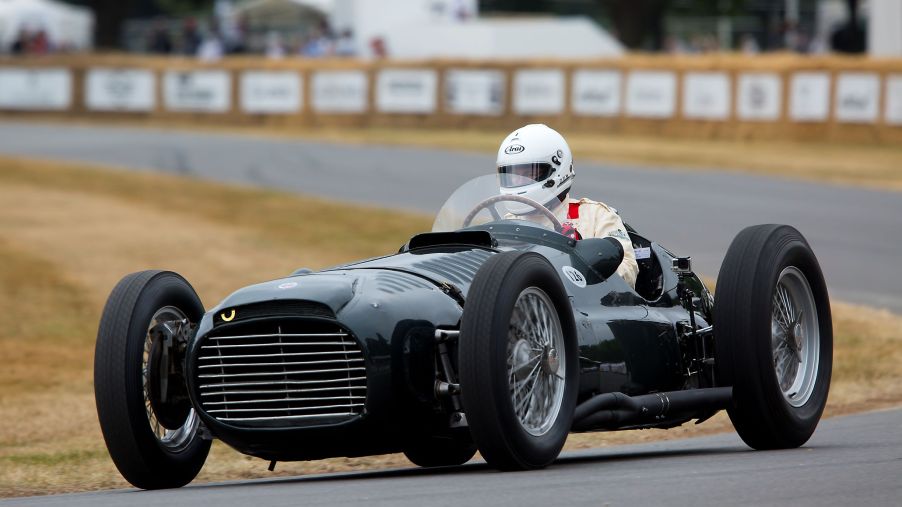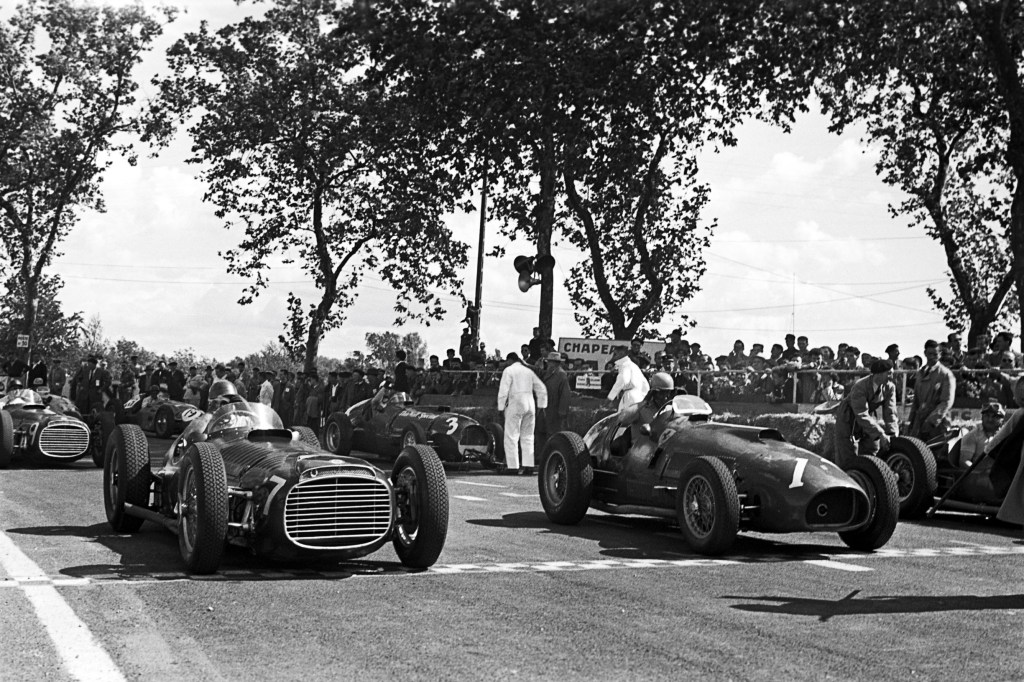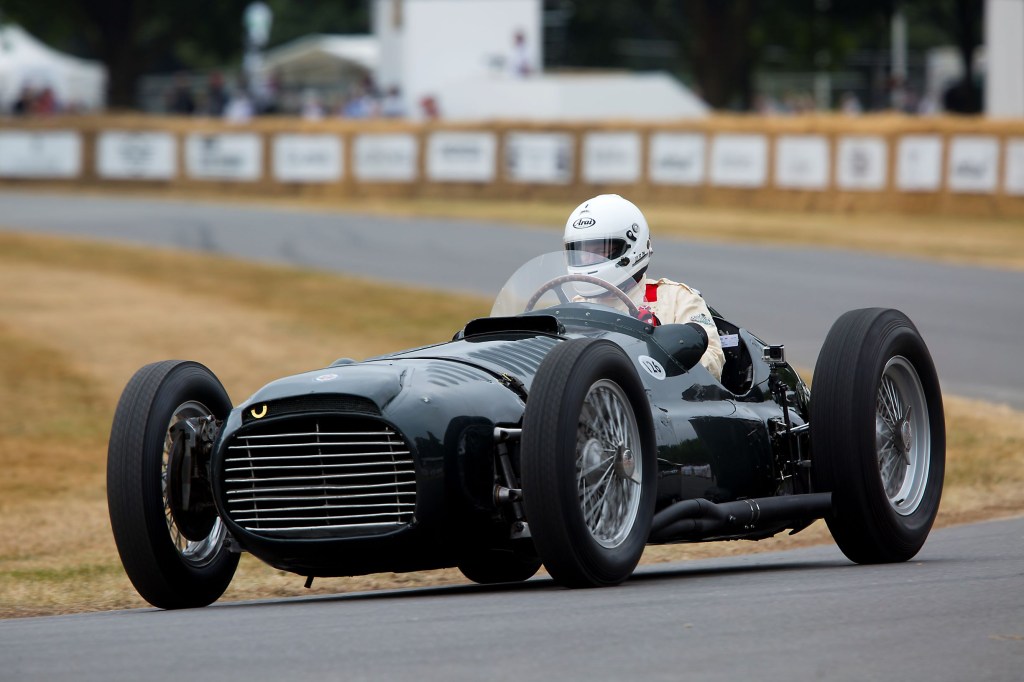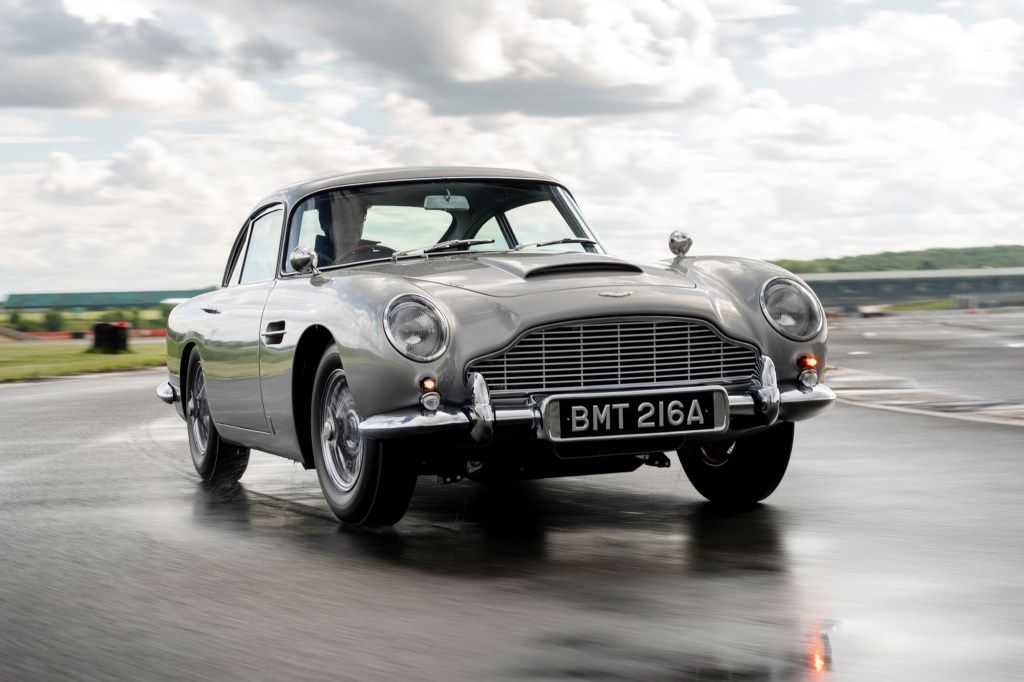
You Can Buy a New 1950s BRM F1 Car With a 591-Hp V16
Automakers aren’t just restoring their beloved classic models anymore. Some high-end marques, like Aston Martin and Bentley, now offer brand-new models built using old-school methods. In the hands of independent companies like Eagle or Pur Sang, such cars would technically still be ‘replicas.’ But when the automaker does it, they’re called ‘continuation cars.’ And it’s not limited to just road-going models anymore. That’s because F1 manufacturer BRM is bringing back its historic Type 15 race car for a limited time.
The original BRM Type 15 was an F1 engineering marvel
British Racing Motors, or BRM, has an extensive F1 history, Autoweek reports. It was founded in 1945 with the goal of creating an all-British Grand Prix-winning team, Retromobile reports. And it was fairly successful in that regard.

The team won the 1962 constructor’s and driver’s championships and placed 2nd in 1963, 1964, 1965, and 1971. It also attracted famous drivers like Graham Hill, Stirling Moss, and Juan Manuel Fangio to its ranks, DriveTribe reports. BRM folded after the 1977 Italian Grand Prix, but not before creating some incredible race cars.

The earliest, and arguably most important of these F1 racers is the 1950 BRM Type 15, aka P15, Concours Virtual reports. The Type 15’s looks and layout were typical of the period. But underneath the skin was an incredible technological tour de force.
The BRM Type 15’s most prominent feature is its 1.5-liter supercharged V16 engine. It has some of the smallest pistons ever put in an F1 car, Grand Prix History reports, and is basically 2 0.75-liter V8s joined together. It burns a mixture of gasoline and alcohol, it makes 600 hp, and it revs to 12,000 RPM. All while making what Speedhunters describes as “an un-godly noise.”
The engine and its supercharger weren’t the BRM Type 15’s only innovations, though. It has aircraft-style oil-air pneumatic suspension from Lockheed. Yes, that Lockheed. And while it originally used drum brakes, in 1951 it became the first F1 car to use discs, Hagerty reports.
Fangio later described the BRM Type 15 as “’ the best Formula One car ever made,’” Concours Virtual reports. Unfortunately, by 1955 it no longer conformed to F1 regulations, and so BRM retired it.
What do the BRM Type 15 continuation cars offer?
Originally, BRM built just 5 Type 15s, but only one original example still exists, Autoblog reports. However, with this year marking the car’s 70th birthday, BRM wanted to celebrate in style. So, it’s bringing the Type 15 back for a limited time.
The continuation BRM Type 15s will be assembled by the famed British restoration shop Hall and Hall, Autocar reports. The build team used over 20,000 original documents to recreate the F1 car. And it helps that Rick Hall of Hall and Hall is a former BRM F1 team manager, Classic & Sports Car reports. As a result, the new Type 15s won’t just be ‘like’ the originals—they’ll essentially be identical.
That includes the car’s technical specs and features. Under the continuation BRM Type 15’s hood is a 1.5-liter supercharged V16, which makes 591 hp and revs to “at least 12,000 RPM,” Autocar reports. As in the original, the power goes to the rear wheels via a 5-speed manual transmission.
The continuation cars will also use the original-style suspension and old-school Dunlop tires. And despite having a steel chassis, the continuation Type 15s will only weigh about 1624 pounds. Plus, because the continuation cars will be built to FIA specifications, they’ll be eligible for classic competitions. That’s good news for those who haven’t heard the bellow of the BRM’s V16. And in fact, BRM will require that potential buyers “actually use” their race cars, Autocar reports.
How can you get one?
Unfortunately, getting one of these Type 15s won’t be easy or cheap.
The project was launched because the company discovered 3 chassis codes that were ordered but never used. So, only 3 cars are planned, and one is already spoken for. Specifically, by John Owen, the son of BRM’s former team principal.

As of this writing, BRM hasn’t officially announced pricing for the continuation Type 15s. But it’s likely firmly in the ‘if you have to ask’ range. Though that’s not uncommon for these high-end builds. Aston Martin is charging $3.3 million for its Goldfinger DB5s, Motor Trend reports.
Still, if you have the money and the penchant for vintage racing, it’s a great opportunity to make a beloved icon live again.
Follow more updates from MotorBiscuit on our Facebook page.


